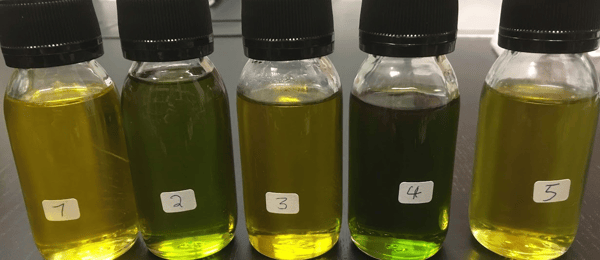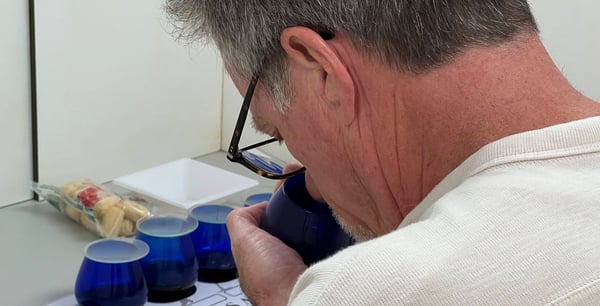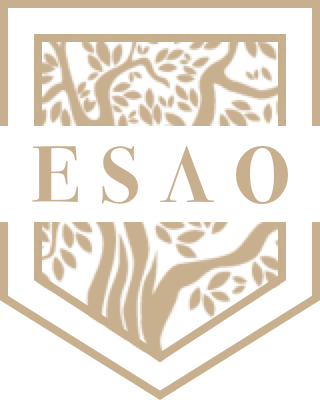Listen to this article
Training in olive oil tasting follows a continuous upward trend. The awareness and global trend towards healthy products, added to the rise of the Mediterranean diet, has made Extra Virgin Olive Oil part of the imports of practically every country in the world.
Consumers are increasingly acquiring olive culture, they know that there are different qualities of olive oil, and they know that olive oil is one of the healthiest fats that exist. This is why the evaluation of olive oil and its points of improvement are increasingly in demand in oil tasting courses.
ESAO olive oil tasting course. ESAO Image Bank
When we do an olive oil tasting course, we have several objectives.
On the one hand, we want to know how to value a virgin olive oil, distinguish the different qualities, know how to choose the one we like the most, based on professional notions. We want to know what criteria we need to be able to distinguish these categories, we want to know based on what we can say that one oil is better or worse than another.
On the other hand, another objective is to know what the improvement points are. There are a large number of students who enroll in the Olive Oil Sommelier Certification who are producers or master millers or cooperatives. This means that they have olive groves or that they know how to make olive oil, and what they want is to know how the production process can be improved, to obtain a higher quality Virgin Olive Oil.
We are going to get closer to these two objectives, oil valuation and points for improvement.
Sensory Analysis
When we talk about valuing olive oil, we are talking about sensory analysis, olive oil tasting . The sensory analysis of Virgin Olive Oil, tries to isolate the sensory or organoleptic properties of the sample and then proceed to its classification according to the regulations established in this regard, in this case by the International Olive Council (IOC), as well as the Regulations of the European Community.
ESAO olive oil tasting course. ESAO Image Bank
The various compounds in olive oil are, in general, so numerous and their interactions so complex and unknown that quality control cannot be completed without resorting to sensory analysis.
In Virgin Olive Oil, sensory analysis is the evaluation, through the human senses, of the smell, aroma, and taste of virgin olive oil.
The complexity and richness of nuances present in the aroma and flavor of Virgin Olive Oil is inherent in its physicochemical composition, as well as in its obtaining procedure, since it is a physical procedure (without any intervention of chemical products) . It is a juice of a fruit, in this case the olive. This is what distinguishes it from any other vegetable oil. It is a fat with remarkable nutritional and organoleptic characteristics, as long as we are talking about Virgin or Extra Olive Oil.
Mouth work
To value Virgin Olive Oil, and know how to taste it, we will work with the nose and mouth.
The work in the mouth seeks to detect the bitter and spicy that the oil transmits to us. We must know that bitter and spicy are two positive characteristics of the oil, since they are closely related to the phenolic composition of olive oil, that is, with the natural antioxidants it contains. This would be the positive parameters of the oil in the mouth but they should not be viewed in isolation, the aftertaste must also be taken into account.
ESAO olive oil tasting course. ESAO Image Bank
The retronasal is an indirect way of smelling an oil. It is about the odors that are produced again in the nostrils when we swallow the oil. It would be like the sensation we have when we burp and the aromas and sensations of the food we have tasted are returned to us.
Well, when we work with olive oil in the mouth, the retronasal work is important because sometimes it describes aromas or flavors that we had not perceived in the first instance.
Nose work
The work on the nose within the Olive Oil tasting course, intends that we know and get to distinguish the different descriptors in olive oil, as well as detect the main defects in the samples.
ESAO olive oil tasting course. ESAO Image Bank
We must know that, to classify an oil and be able to value it, it is necessary to know in advance what the defects are.
We understand by default an anomaly or alteration within the evaluation of a virgin olive oil. They are perceived in the nose or in the mouth, through the aftertaste.
Currently there are five defects determined by the IOC, and which are the ones that through the profile sheet will classify virgin olive oil in one or another category.
These defects are: Rancid, Winey, Moldy, Fusty and Weet Wood.
In the Professional Olive Oil Sommelier Course, the five defects are worked on to finish distinguishing them and thus be able to proceed to assess the olive oil with solid criteria. In the same way, we have to know how to assess its intensity, on a scale from or to 10, to know in what intensity we assess the defect it has.
The main reason for differentiating and detecting these defects, as well as seeing on what scale they are, is because as soon as we detect a defect in the samples, we must change the category, and instead of classifying as extra virgin, we would classify as virgin, that is, a category lower in quality than the so-called extra virgin. The same importance is to know how strong the defect is.
With the nose job we intend to detect once again the presence or absence of defects and their intensity, as well as the descriptors that the sample evokes. This tool brings us closer and makes it easier to describe with common words the different aromas and flavors that we perceive through our senses (in this case, taste and smell) when tasting a Virgin Olive Oil. When we speak of descriptors, we also refer to notes or memories of aromas and smells similar to products that we have in common with the rest of the tasters.
The descriptors to detect them depend on the culture to which the taster belongs, since the aromas are part of the environment where the person has developed.
This is why instead of putting specific descriptors, we will speak of main or key descriptors in Virgin Olive Oil, and we better group them into the groups or families to which those specific descriptors belong, despite the fact that in the course of tasting we will see the specific descriptors.
The families to which the specific descriptors in olive oil belong are:
- Herbaceous (herbs, olive leaves ...)
- Vegetables (artichoke, green beans ..)
- Fruit trees (apple, banana ...)
- Nuts (almonds, walnuts ...)
- Florals (almond blossom, white flowers ...)
- Woods (pine, resin ...)
Descriptors. ESAO Image Bank
As we train and become familiar with both the descriptors and the defects, we will progress and improve in our valuation of virgin olive oils and their different categories.
Once we have trained and have a basic knowledge about the detection of defects and descriptors, we will be able to work on the points of improvement in the production process, in order to enhance the descriptors on the one hand and to minimize the defects on the other hand.
What is obvious is that we will not be able to work with points of improvement if we do not know what we need to improve.
Improvement Points
If we want to improve the intensity and freshness of the descriptors in our oil, there are factors involved in the improvement points, such as:
- Specific variety of olive with which we work
- Ripening stage of the olive
- Amount of water both in irrigation and during the process
ESAO Image Bank
If we want to work on the defects in the tasting of our oil, we will take into account where the intervening factors are found in the points of improvement, such as:
- Health status of the olive
- Cleaning of machinery and oil mill
- Temperature and Times at which we work
- Cellar/Warehouse and Marketing
ESAO Image Bank
In the Professional Olive Oil Sommelier Course it is intended that students become familiar with everything that will help us to taste better and better, and above all to understand what are the details of the sensory analysis of olive oil.
Knowing how to taste will help us to know how to identify defects. Once we know and become familiar with the defects, we see and understand where each of them come from.
Only by knowing where each of the defects comes from will we be able to intervene and understand our production process, its critical points and how to improve them within our possibilities.
We have to try to ensure that the improvement points are always after the identification of the weak points, and the weak points are always after the work in tasting, the work in sensory analysis of olive oil, knowledge and training at the end and at the end. cape.
.png)





